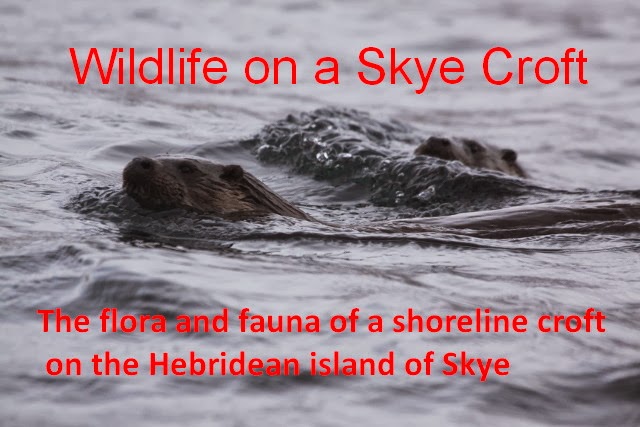A bright sunny day, I had planned to shred wood from a number of garden shrubs that I had cut back. That plan was scrapped because we had another otter day.
A family of otters appeared in Loch Ainort and my wife and I watched them for over an hour. A mother and two cubs, they fished in the kale close to the rocks. Occasionally the mother would fish in slightly deeper water, leaving the cubs on a rock, bringing back food (young cod?) for the cubs which they tore into avidly. From time to time the mother would catch something for herself and eat it in the water.





This year reinforces the pattern established over several years; few if any sightings in the summer but then an appearance of an otter family in November / December. There have been a few signs for several weeks that there was a breeding otter about - heavy spraints by the slipway for example. I also found a spraint at the top of the croft at least 100 metres from the shore and I think the breeding holt is on Am Meall across the road. (Incidentally the record book that accompanied the first edition Ordnance Survey in 1876 translate this hill as 'The lump', not as I thought 'The hill').















.JPG)
.JPG)
.JPG)

.JPG)
.JPG)
%2BSpores.jpg)


